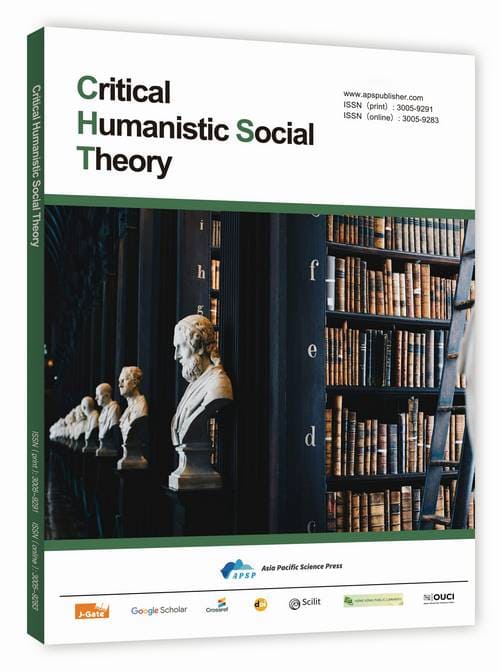Pathway Design, Implementation, and Effectiveness Evaluation of the Grand Canal Cultural Heritage Resources in Geographic Science Education
DOI:
https://doi.org/10.62177/chst.v2i3.585Keywords:
Cultural Heritage, Human Geography, Science Education, Beijing-Hangzhou Grand CanalAbstract
The organic integration of cultural heritage geographical resources into geographical science education can enhance students’ comprehensive understanding of history, geography, and social development, thereby promoting interdisciplinary thinking and scientific literacy. Taking China’s ancient Grand Canal as a typical case, this study systematically explores the pathway design, implementation process, and effectiveness evaluation of transforming the geographical resources of the Grand Canal’s cultural heritage into carriers for geography science education. Through a literature review, case analysis, and teacher practice observation, the study reveals: 1) effective strategies for embedding the historical and geographical background of the canal, its spatial network, and regional economic elements into the curriculum; 2) the role of immersive, contextualized, and inquiry-based instructional design in improving students’ geographical cognition, inquiry abilities, and sense of social responsibility; and 3) a framework for effectiveness evaluation based on multiple assessment dimensions and an operational indicator system. The research results hold theoretical and practical significance for secondary geography science education curriculum reform, teacher professional development and cultural heritage conservation education. They provide applicable curriculum packages and evaluation tools, facilitating promotion and application in different regions. The limitations of this research lie in the regional specificity of the case and data availability; future studies should expand to cross-regional comparative studies and long-term follow-up assessments.
Downloads
References
Qin, X. (2004). An Unignorable Social Engineering: Geographic Popular Science [Geography Education].
Yu, K., Li, D., & Li, W. (2008). The Complete Value System of the Grand Canal (Beijing–Hangzhou Grand Canal). Progress in Geographic Sciences, 27(2), 9. DOI: CNKI:SUN:DLKJ.0.2008-02-001.
Sun, T., & Yuan, T. (2006). Human Geography Education in Teachers’ Training Colleges and the Cultivation of Students’ Humanistic Literacy. Journal of Neijiang Normal University, 21(4), 4. DOI: CNKI:SUN:NJSG.0.2006-04-032.
Sang, W., Liu, M., & Shi, T. (2024). Cultural Gene Theory-based Protection and Renewal Planning of Canal Cultural Heritage: A Case Study of the Jiaxing Section Cultural Corridor of the Grand Canal. Journal of Planning, 40(4), 40–47.
Wu, J. (2010). Strengthening Geographic Popular Science Education to Improve Civic Science Literacy. Today’s Science Forum, 2010(4), 1. DOI: CNKI:SUN:JRKR.0.2010-04-209.
Qin, Z. (2025). Application of Rural Geographic Resources in High School Human Geography Teaching. Geography Education, 2025(3).
Zhang, R. (2005). The Jianghuai Transport System in Early Tang: The Jiangnan–Huai River Transport. Journal of Graduate School of the Chinese Academy of Social Sciences, 2005(1), 6. DOI: CNKI:SUN:ZSKY.0.2005-01-022.
Mao, F., Nie, Y., & Chen, S. (2008). The Great Ecological Civilization Project: A Reassessment of China’s Grand Canal Sites. Geography and Earth Sciences Information, 10(004), 511–519. DOI: 10.3969/j.issn.1560-8999.2008.04.015.
Xu, W. (2023). Ecological Aesthetics and Social Aesthetic Education Value of the Grand Canal Cultural Belt. Urban Planning, 47(8), 57–65. DOI: 10.11819/cpr20221627a.
Bu, Y. (2010). Salt Subsidies, Public Debt, and Capital Markets: Centering on the Salt Administration of the Two Huai in the 15th–16th Centuries. Historical Studies, 2010(4), 12. DOI: CNKI:SUN:LSYJ.0.2010-04-007.
Xu, T. (1986). The Commerce of Linqing in the Ming and Qing Dynasties. Journal of Economic History Studies, 1986(2), 23. DOI: CNKI:SUN:ZJSY.0.1986-02-008.
Hou, B., Jin, Y., & Hu, M. (2025). The Rebirth of canal cultural heritage from a spatial production perspective: A case of Yangzhou’s Sanwan Ecocultural Park along the Grand Canal. Economic Geography, 2025-09-05. DOI: 10.15957/j.cnki.jjdl.2022.03.017.
Downloads
How to Cite
Issue
Section
License
Copyright (c) 2025 Ge Shi, Xiaoyu Tao, Lihang Feng, Chuang Chen, Chanfang Shu

This work is licensed under a Creative Commons Attribution-NonCommercial 4.0 International License.
DATE
Accepted: 2025-09-11
Published: 2025-09-26
















